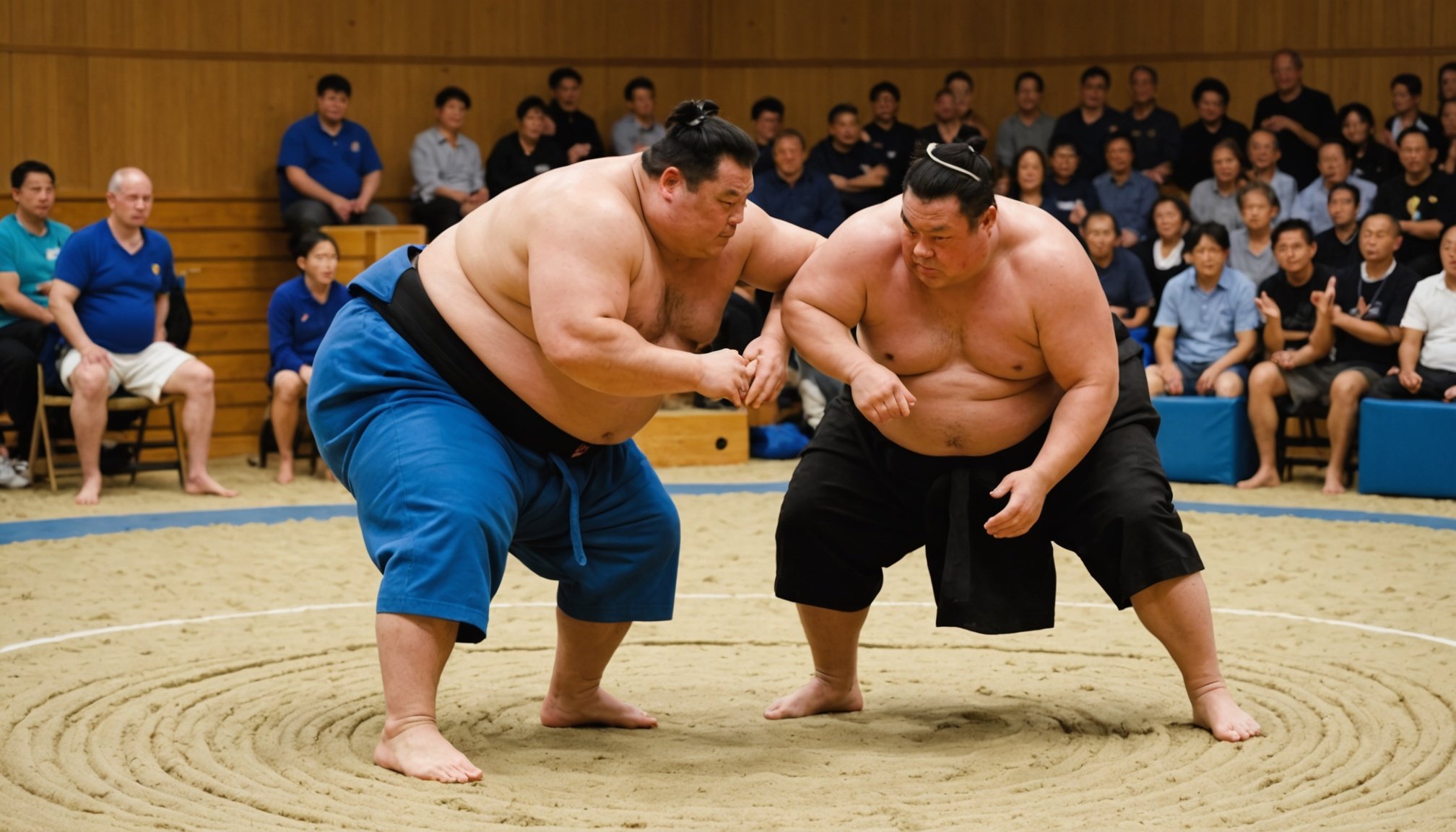Enhancing Balance and Stability: Top Strategies for UK Sumo Wrestlers
Sumo wrestling, a centuries-old martial art from Japan, demands a unique blend of strength, technique, and balance. For UK sumo wrestlers, mastering balance and stability is crucial for optimal performance and success in the sport. Here, we delve into the top strategies that can help these athletes enhance their balance and stability skills.
Understanding the Importance of Balance in Sumo Wrestling
Balance is the cornerstone of sumo wrestling. It allows wrestlers to maintain their position, generate power, and execute techniques effectively. A sumo wrestler with excellent balance can better withstand the force of their opponent and capitalize on any momentary loss of balance by their adversary.
Also read : Key Elements of an Effective Sports Psychology Program for Boxers in the UK
“Balance is key in sumo. If you can’t maintain your balance, you can’t win,” says Andrew Freund, a renowned sumo coach. “It’s not just about being strong; it’s about being stable and agile.”
Strength Conditioning for Balance Stability
Strength training is essential for sumo wrestlers to build the muscular foundation necessary for balance and stability. Here are some key exercises and techniques:
Have you seen this : Essential Factors UK Wrestlers Should Weigh When Selecting the Perfect Wrestling Shoes
Lower Body Strength
The lower body is the foundation of a sumo wrestler’s balance. Exercises like sumo squats, deadlifts, and lunges are vital.
- Sumo Squats: Performed with the feet wider than shoulder width, sumo squats target the adductor muscles and help improve balance by strengthening the legs and hips.
- Deadlifts: This exercise works multiple muscle groups, including the legs, back, and core, all of which are critical for maintaining balance.
- Lunges: Lunges help improve balance by strengthening the legs and improving coordination.
| Exercise | Description | Benefits |
|
|-----------------------------------------------------------------------------|
|
| Sumo Squats | Squats performed with feet wider than shoulder width | Strengthens adductor muscles, improves balance |
| Deadlifts | Lifting a weight from the ground to hip level | Works multiple muscle groups, improves core strength |
| Lunges | Alternating leg movements mimicking walking | Improves leg strength, coordination, and balance |
Core Strength
A strong core is essential for stability and balance. Exercises like planks, Russian twists, and leg raises can help.
- Planks: Holding a plank position engages the core muscles, which are crucial for maintaining balance.
- Russian Twists: This exercise targets the obliques, helping to improve rotational stability.
- Leg Raises: Hanging leg raises strengthen the lower abs, which are vital for maintaining a stable position.
Techniques for Improving Balance
Beyond strength training, specific techniques can significantly enhance a sumo wrestler’s balance.
Stance and Position
The stance, or “shiko,” is fundamental in sumo wrestling. Here are some tips:
- Feet Width: Keeping the feet wider than shoulder width provides a stable base.
- Knee Bend: Slightly bending the knees lowers the center of gravity, making it harder to be pushed off balance.
- Back Straight: Maintaining a straight back ensures that the body’s weight is evenly distributed.
Single Leg Training
Training on a single leg can dramatically improve balance and stability.
- Single Leg Squats: Performing squats on one leg strengthens the muscles and improves balance.
- Single Leg Deadlifts: Deadlifts on one leg target the core and leg muscles, enhancing overall stability.
| Technique | Description | Benefits |
|
|-----------------------------------------------------------------------------|
|
| Single Leg Squats| Squats performed on one leg | Strengthens leg muscles, improves balance |
| Single Leg Deadlifts| Deadlifts performed on one leg | Targets core and leg muscles, enhances stability |
Weight Training with Lighter Weights
While heavy weights are often associated with strength training, using lighter weights can also be beneficial for sumo wrestlers.
High-Volume Training
Using lighter weights for higher volumes of repetitions can improve muscular endurance, which is crucial for maintaining balance over extended periods.
- Example Routine:
- Sumo squats: 3 sets of 15 reps
- Deadlifts: 3 sets of 12 reps
- Lunges: 3 sets of 15 reps per leg
Explosive Power Training
Incorporating explosive power training with lighter weights can enhance the quick, powerful movements required in sumo wrestling.
- Example Exercises:
- Box jumps with lighter weights
- Resistance band training for explosive leg movements
Martial Arts Cross-Training
Cross-training in other martial arts can provide valuable insights and techniques that can be applied to sumo wrestling.
Jiu Jitsu
Jiu jitsu, for instance, emphasizes ground fighting and submission holds, but it also teaches valuable lessons about balance and leverage.
- Benefits:
- Improved flexibility and mobility
- Enhanced understanding of body positioning and leverage
- Better control over opponents
“Training in jiu jitsu has helped me understand how to use my opponent’s weight against them,” says Tom Harris, a UK sumo wrestler. “It’s made me a more balanced and effective wrestler.”
Practical Insights and Actionable Advice
Here are some practical tips for UK sumo wrestlers looking to enhance their balance and stability:
- Leg Day Focus: Dedicate specific days to leg training, ensuring comprehensive coverage of all muscle groups.
- Core Integration: Incorporate core exercises into your daily routine, even on non-strength training days.
- Single Leg Training: Include single leg exercises at least twice a week to improve balance and stability.
- Stance Practice: Practice your stance regularly, focusing on keeping your feet wide and your back straight.
Real-Life Examples and Anecdotes
One notable example is the story of Dariusz Dziuba, a Polish sumo wrestler who transitioned from weightlifting to sumo. Despite his initial struggles with balance, Dziuba focused intensely on lower body strength and single leg training. Within a year, he became one of the top sumo wrestlers in Europe.
“Dariusz’s transformation was remarkable,” says his coach. “He went from being a strong weightlifter to a balanced and agile sumo wrestler. His dedication to balance and stability training was key.”
Enhancing balance and stability is a multifaceted process for UK sumo wrestlers. By combining strength conditioning, specific techniques, and cross-training in other martial arts, athletes can significantly improve their performance. Remember, balance is not just about physical strength; it’s also about mental focus and practice.
As Andrew Freund aptly puts it, “Balance is the difference between winning and losing in sumo. It’s what sets the champions apart from the rest.”
By following these strategies and tips, UK sumo wrestlers can elevate their game, ensuring they are always ready to face any opponent with confidence and stability.






